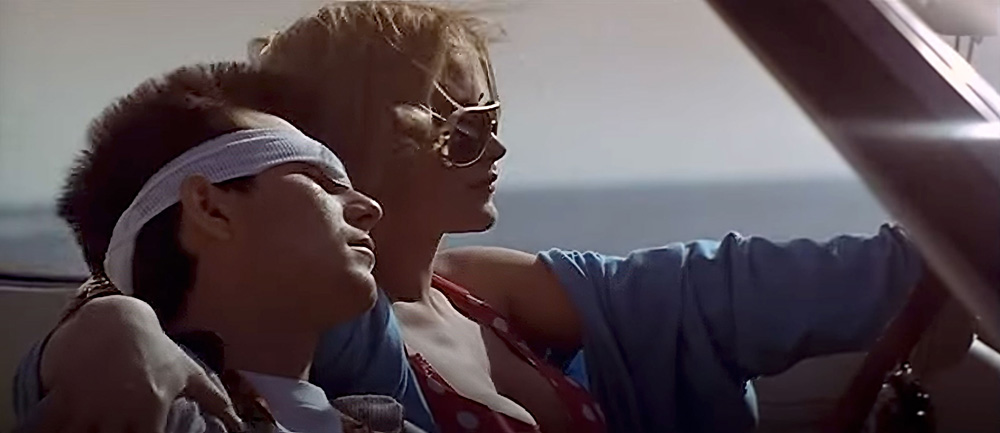The essence of passion within the realm of dark romance writing transcends mere interest; it delves into the depths of personal circumstances, traumas, and profound emotional landscapes. This intrinsic connection between the writer’s deepest drives and the narrative they craft is pivotal, especially in a genre as emotionally charged and intimate as dark romance. Drawing inspiration from Quentin Tarantino’s approach to storytelling—marked by a blend of impeccably cool characters and those who are frantic, desperate, and pulsing with life—offers a blueprint for infusing dark romance narratives with authenticity and edge, balancing the polish with palpable human emotion.
Embrace Personal Connections:
Tarantino’s films often reflect his deep-seated passions for specific genres, themes, or cinematic eras, weaving his personal obsessions into the fabric of his narratives. For dark romance writers, this means not shying away from the personal elements that draw you to the genre. Whether it’s exploring the shadows of love, the complexities of desire, or the scars left by trauma, embedding your narrative with personal stakes enriches the story, making it resonate on a deeper level with readers.
Balance the Cool with the Raw:
Tarantino’s characters often oscillate between the epitome of cool and raw, unfiltered humanity. In dark romance, while it’s enticing to craft characters who navigate their worlds with a suave detachment, grounding them with counterparts or moments of vulnerability ensures the scene remains realistic. For every character who can deliver a witty retort with a gun to their head, there should be moments or characters that reflect genuine fear, desperation, or passion. This dichotomy not only adds depth to your characters but also heightens the emotional stakes, drawing readers deeper into the story’s heart.
Leverage Authentic Emotions:
The authenticity of a scene, as seen in Tarantino’s work, often stems from a genuine portrayal of emotions. In dark romance, this authenticity is crucial. Characters may find themselves in heightened or extreme situations, yet their reactions should speak to the primal fear, love, or desperation such moments evoke. Let your characters experience and express the full spectrum of human emotion, from the heights of ecstasy to the depths of despair. This emotional honesty is what transforms a narrative from merely engaging to truly compelling.
Cultivate Depth in Dialogue:
Tarantino’s dialogue is famously sharp, witty, and reflective of his characters’ complexities. However, it’s not just the polish that makes it compelling but the underlying truths and passions it reveals. In dark romance, allow your characters’ dialogue to be a conduit for their deepest desires, fears, and motivations. Dialogue that cuts to the core of a character’s being can turn a simple conversation into a pivotal moment of connection or revelation.
Confront the Edge:
The fear of taking a narrative too far or making it too personal can lead to characters and scenes that feel sanitised or distant from the raw edges of real life. Tarantino’s willingness to push boundaries—to explore violence, love, and redemption without restraint—is a lesson in the power of storytelling that dares to confront the uncomfortable or taboo. In dark romance, don’t be afraid to explore the edges of your characters’ experiences and emotions, to delve into the darkness with authenticity and courage.
Reflect Human Complexity:
The realness of Tarantino’s scenes comes from his passion for showcasing the complexity of the human condition. In dark romance, this means acknowledging that love and desire can coexist with fear and pain, that characters can be both heroes and villains in their own stories. By embracing this complexity, your narrative can achieve a level of authenticity and emotional resonance that captivates readers, making them feel as invested in the outcome as the characters themselves.
In essence, the passion for storytelling in dark romance, inspired by Tarantino’s cinematic approach, lies in embracing the personal, balancing the polished with the palpable, and daring to explore the depths of human emotion with authenticity. It’s about creating a narrative that pulsates with life, where every line of dialogue, every moment of tension, and every expression of desire or despair feels undeniably real, drawing readers into a world where the stakes are as high and as heartfelt as the passions that drive it.
Case study – “Inglorious Basterds” – Opening Scene:
The meticulous tension-building of the opening scene in “Inglourious Basterds,” where SS Colonel Hans Landa (Christoph Waltz) interrogates French dairy farmer Perrier LaPadite (Denis Ménochet) about hiding Jews, demonstrates Tarantino’s passion for crafting intricate, character-driven narratives. The scene is a slow burn, with dialogue that draws viewers into a web of suspense, revealing Tarantino’s deep engagement with his characters and the story’s historical context. For romance writers, this scene underscores the power of dialogue and tension in deepening the narrative. By investing in the authenticity of their characters’ interactions and the emotional stakes of their story, writers can create compelling narratives that resonate with readers on a profound level.
Application for Dark Romance Writers:
The “Inglourious Basterds” opening scene exemplifies how a narrative can be imbued with tension, complexity, and emotional depth—elements that are crucial in crafting engaging dark romance stories. By integrating these aspects, writers can create a captivating dance of minds and hearts, where the stakes are high, and the emotional payoff is profound, leaving readers enthralled and invested in the outcome of the characters’ tumultuous journey towards love.
Building Tension Through Dialogue:
Tarantino uses dialogue not just for exposition but as a primary tool for building suspense. Each word Landa utters is charged with double meanings and the threat of violence, creating a palpable sense of dread. In dark romance, dialogue can similarly be used to build tension between characters, layering their interactions with unspoken emotions and threats, enhancing the stakes of their relationship.
Character Depth and Complexity:
Colonel Landa’s charm and politeness, juxtaposed with his ruthless efficiency, provide a compelling study in contrasts. Similarly, dark romance characters can benefit from such complexity, where affections and attractions are interwoven with darker, more dangerous motivations, offering a richer, more nuanced portrayal of love and desire.
Atmospheric Tension:
The idyllic setting of the French countryside contrasts starkly with the scene’s underlying tension. This technique of using setting to enhance the emotional tone can be particularly effective in dark romance, where seemingly serene or romantic backdrops can underscore the intensity and peril of the central relationship.
Emotional Stakes and Personal Sacrifice:
The scene’s climax, revealing the hidden family under the floorboards, underscores themes of sacrifice and desperation. Dark romance narratives can draw from this by exploring the lengths to which characters will go for love, including the sacrifices they’re willing to make and the secrets they’re forced to keep.
Psychological Warfare:
Landa’s psychological manipulation of LaPadite, pressing until he breaks, is a stark illustration of power dynamics. Incorporating similar elements of psychological interplay in dark romance can deepen the conflict and attraction between characters, making their interactions and the evolution of their relationship more compelling.




